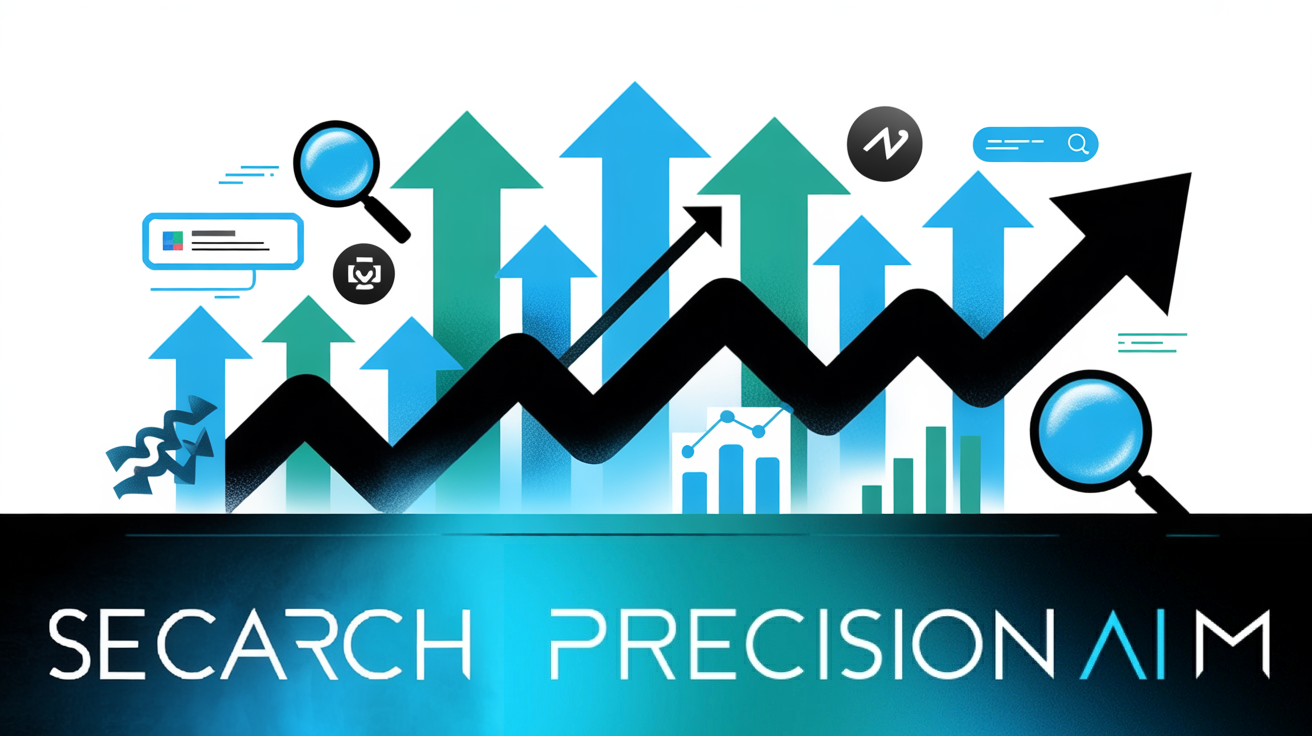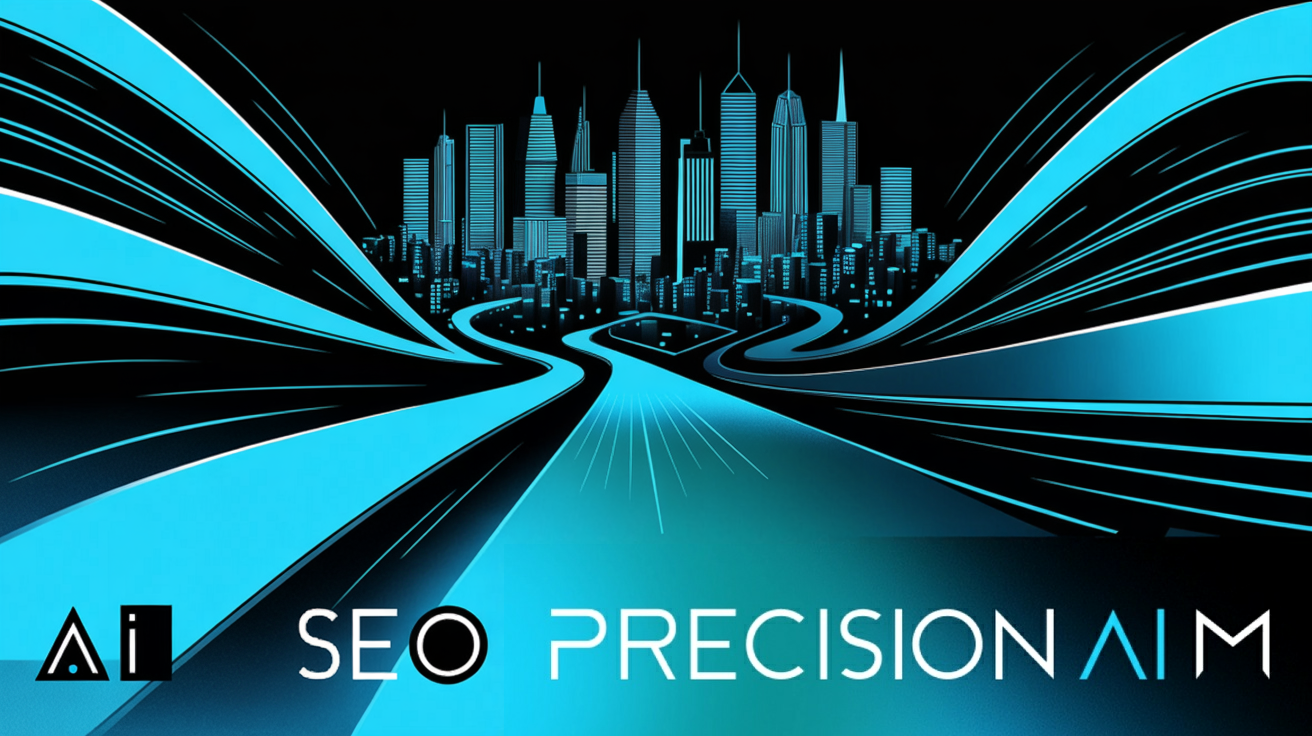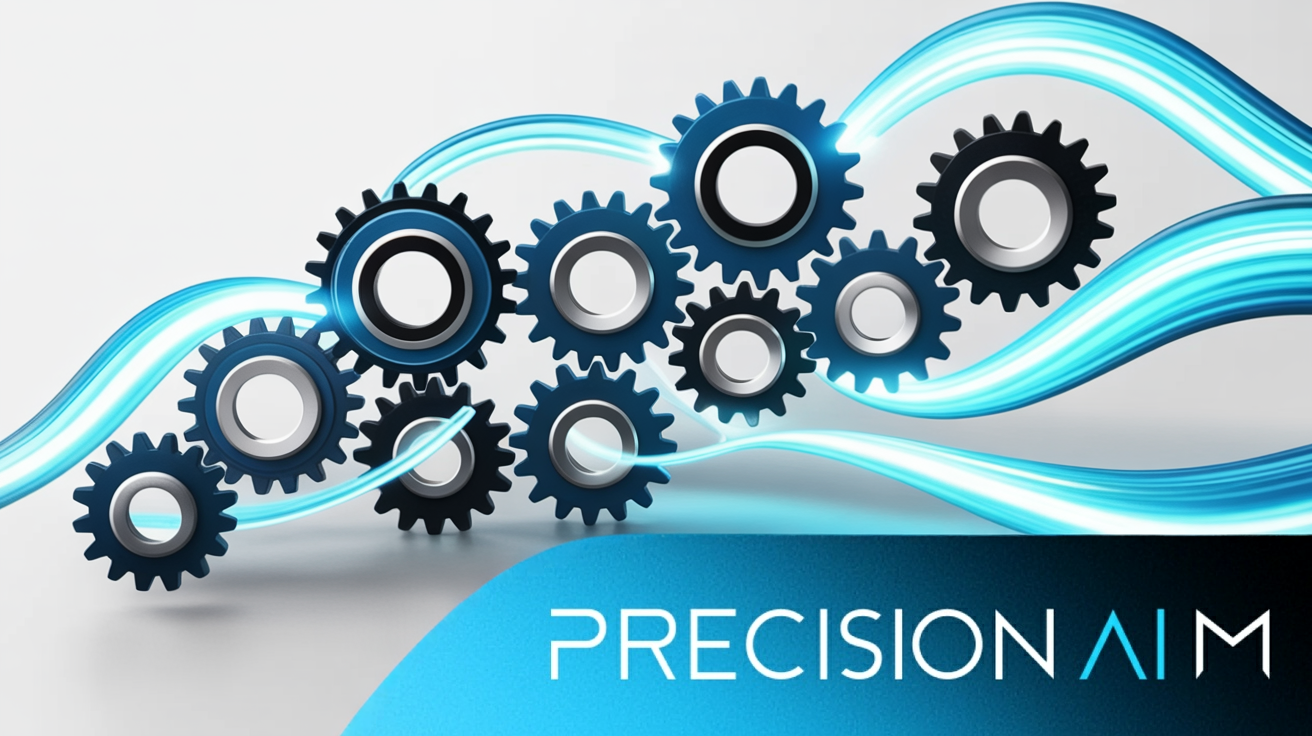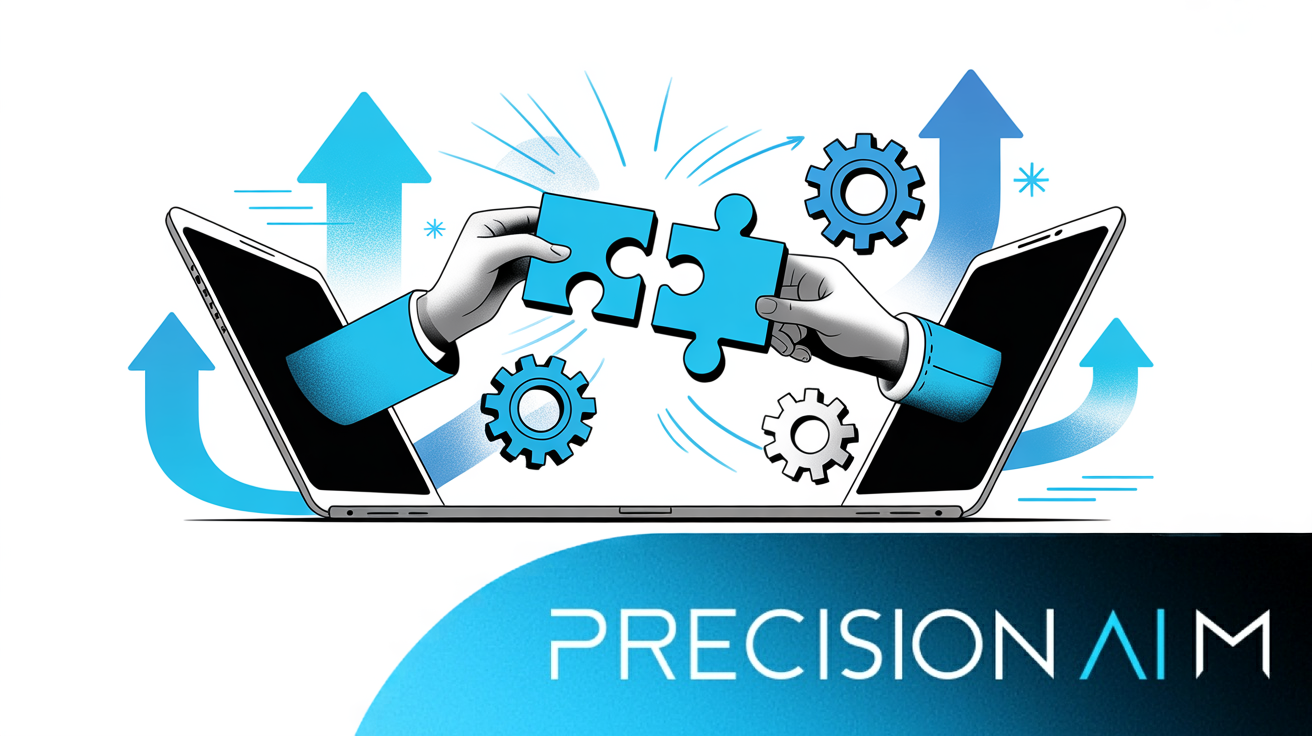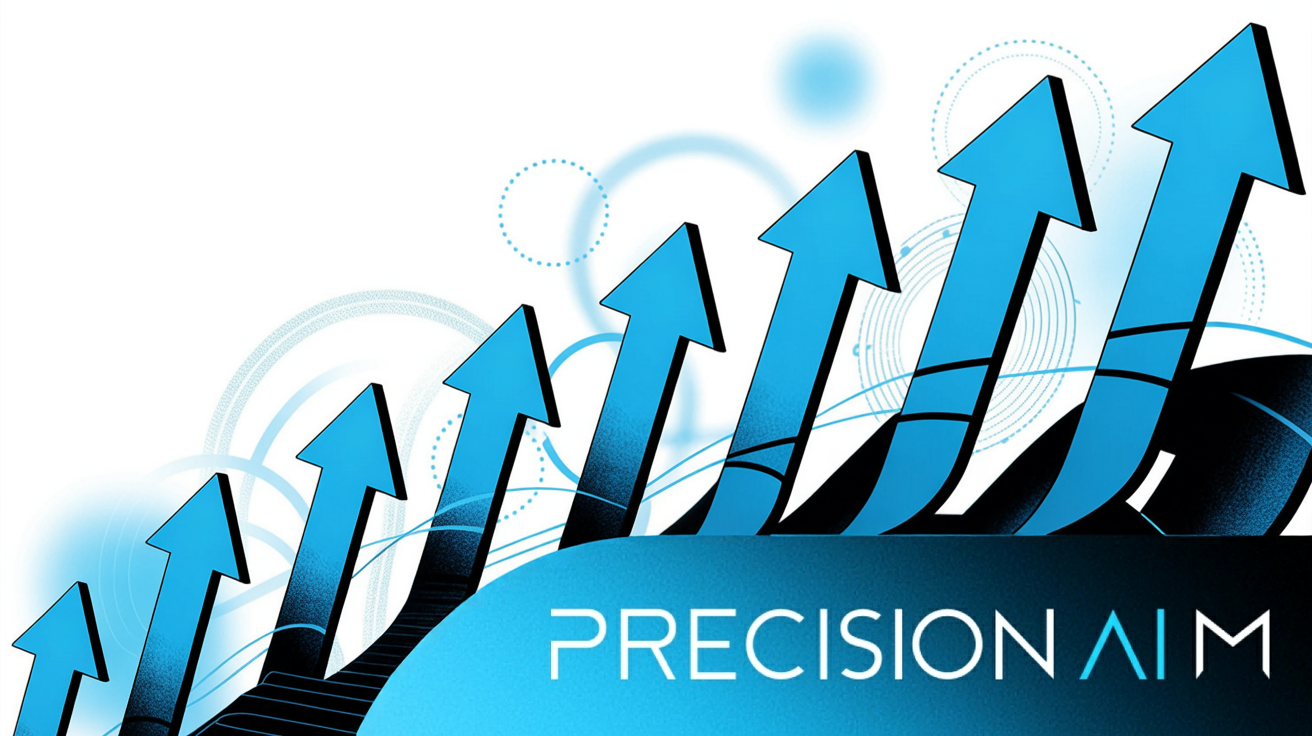Most marketing teams hit a wall when trying to grow output without burning out resources or losing quality. I’ve seen how manual tasks, scattered campaigns, and disconnected analytics can stall progress and frustrate even the most ambitious teams.
Scaling isn’t just about spending more or adding channels—it’s about building systems that let your marketing efforts multiply efficiently. In this article, I’ll break down the four pillars of sustainable scaling: targeted expansion, automation, analytics integration, and capacity-building, with practical frameworks and real-world examples.
You’ll get step-by-step guidance on setting measurable objectives, choosing the right automation and analytics tools, and prioritising campaigns for maximum impact. I’ll also cover how to manage complexity, avoid common pitfalls, and maintain brand consistency as your output grows.
By the end, you’ll have actionable strategies for scaling digital marketing that deliver higher ROI, smarter resource use, and lasting growth—without sacrificing quality or burning out your team.
What is scaling digital marketing efforts?
Scaling digital marketing means transforming scattered, manual tasks into a co-ordinated, high-output system built for sustainable growth. It’s not just about pushing out more adverts or boosting the budget. The heart of scaling is strategy, automation, and processes that let your marketing output rise faster than you add people or spend.
Instead of multiplying random activities, genuine scaling helps marketers orchestrate multi-channel campaigns, maintain unified messaging, and create the kind of infrastructure where returns accelerate as efforts expand.
But, why does this matter so much now? The digital space is busier than ever, and traditional “work harder” tactics don’t cut through. Over 71% of companies now use automation in their marketing, with 76% reporting positive ROI and 77% seeing improved conversion rates. Scaling is no longer an option—it’s how leading organisations compete for attention while keeping costs and resources in check.
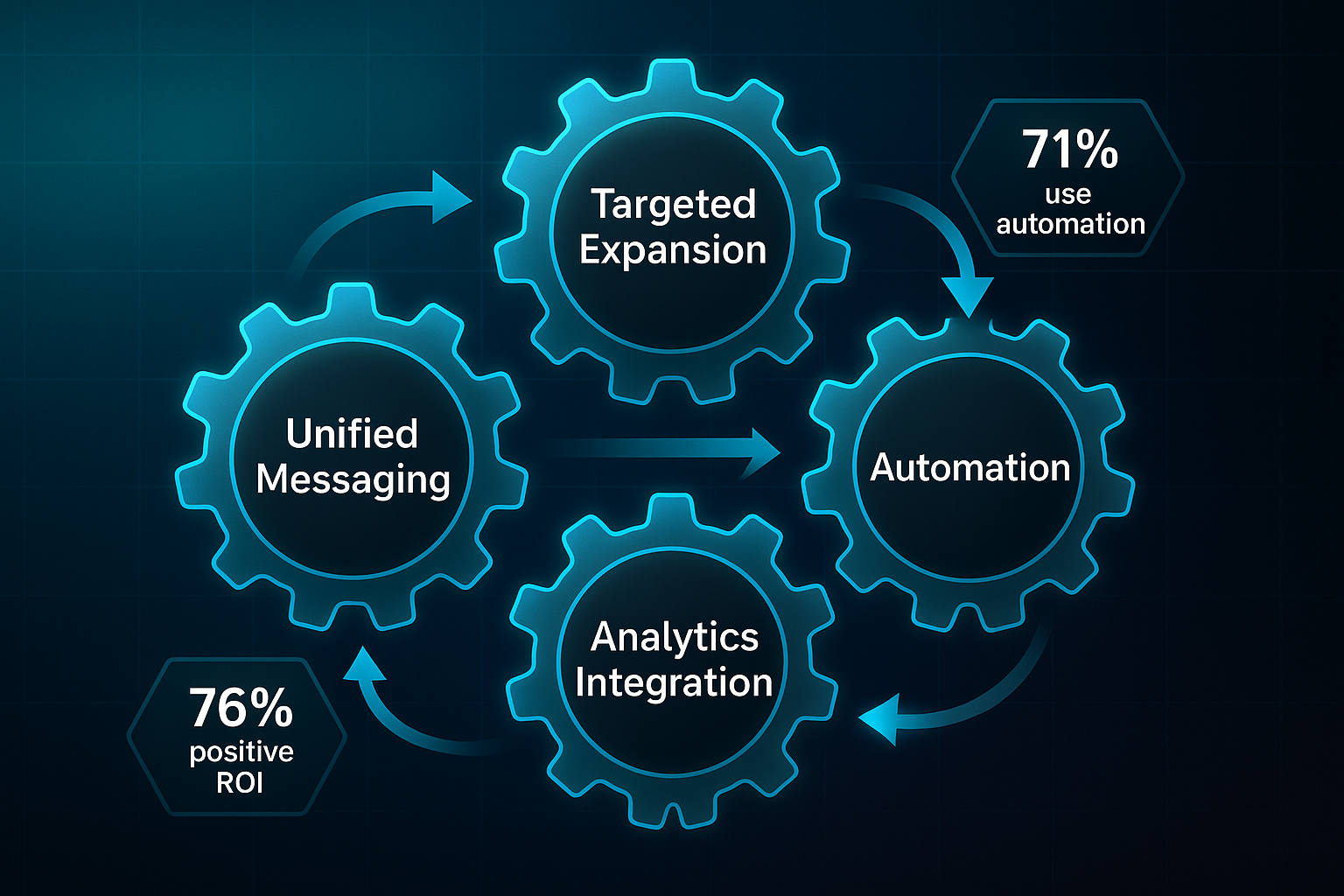
So what’s at the core of scaling? There are four elements — each reinforcing the next:
- Targeted Expansion
Shifting from single campaigns to strategic, multi-platform initiatives working smoothly together. - Automation
Systems take over repetitive tasks, supporting faster launches, reporting, and management. - Analytics Integration
Combining measurement across channels for real-time feedback and continuous improvement. - Capacity-Building
Increasing both the volume and quality of deliverables—like blogs or posts—without proportional rises in resources.
Operational signals reveal where organisations are stuck and ready to scale. You might see endless campaign backlogs, bottlenecks from manual handoffs, dropping returns from old channels, patchy analytics, or confusion caused by disconnected tools.
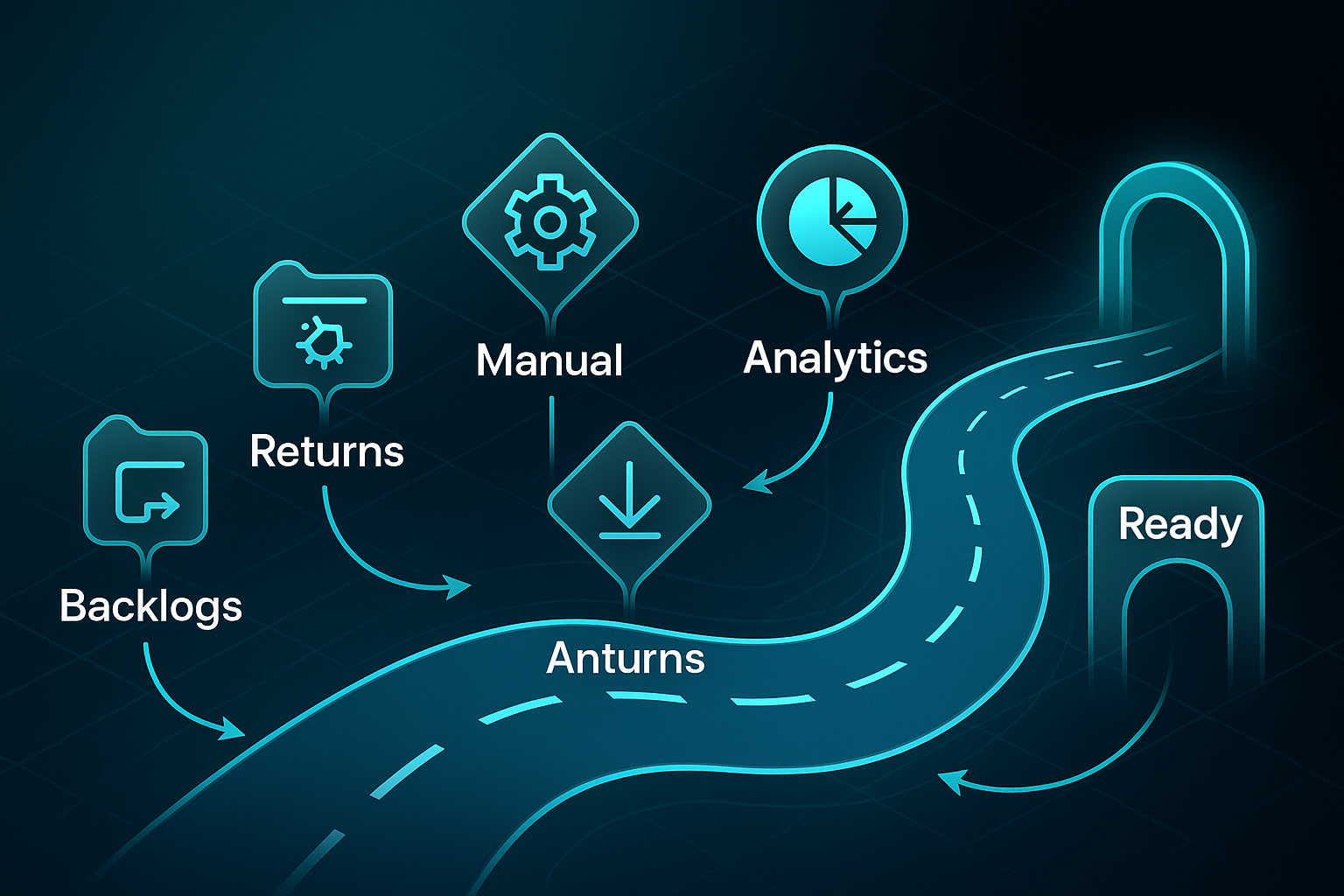
To make sense of the journey, frameworks like the RACE model (Reach, Act, Convert, Engage) chart the customer journey, while the BCG Digital Marketing Maturity Model tracks progress from basic execution to complete optimisation.
Let’s put this into context. Imagine a retailer like WineDeals, manually publishing blogs. Introducing AI-powered content automation means the team can publish far more regularly, watch click-through rates rise, and redirect staff effort from repetitive work to strategy, improving both quality and consistency.
Measuring success means looking at KPIs—speed of campaign output, reach of analytics, ROI per pound spent, customer acquisition cost, lifetime value, and conversion growth. Industry research highlights consistent gains when scaling is managed well.
The primary focus for 2025 is understanding the statistical impact of automation and AI on marketing, indicating a clear industry trend towards measuring the ROI and performance of these technologies.
Of course, challenges come with the territory: maintaining quality, aligning the message, avoiding tool overload, managing complex data, and making sure teams are up to speed. Yet the benefits—greater reach, smarter efficiency, rich analytics, and real agility—make scalable digital marketing essential for thriving in today’s fast-evolving world.
Building a Scalable Digital Marketing Strategy—Frameworks and Planning Essentials
Let’s talk about what really sets up a digital marketing strategy for long-term growth. At its core, it’s about creating solid foundations and clear pathways for scaling—not just making it up as you go along. The first move? Set objectives that you can actually measure. So instead of aiming to “grow blog output,” shift to something like “publish 10 to 100 posts per month, each reaching at least 2% engagement.” Or, rather than sticking to a single channel, try integrating 2 to 5 channels and make sure they all feed into unified reporting.
Here’s where the OKR (Objectives and Key Results) framework shines. It takes your broad ambitions and turns them into specific, trackable outcomes. Think “double monthly inbound leads” as your quarterly objective, then break it down into key results such as “launch three new campaigns” and “increase organic traffic by 25%.” For tracking all these moving parts, most teams reach for tools like HubSpot (starting at £39/month), free options such as Google Analytics, or Salesforce CRM (from £20 per user per month). All these let you set custom KPIs, automate reporting, and keep tabs on progress—without drowning in spreadsheets.
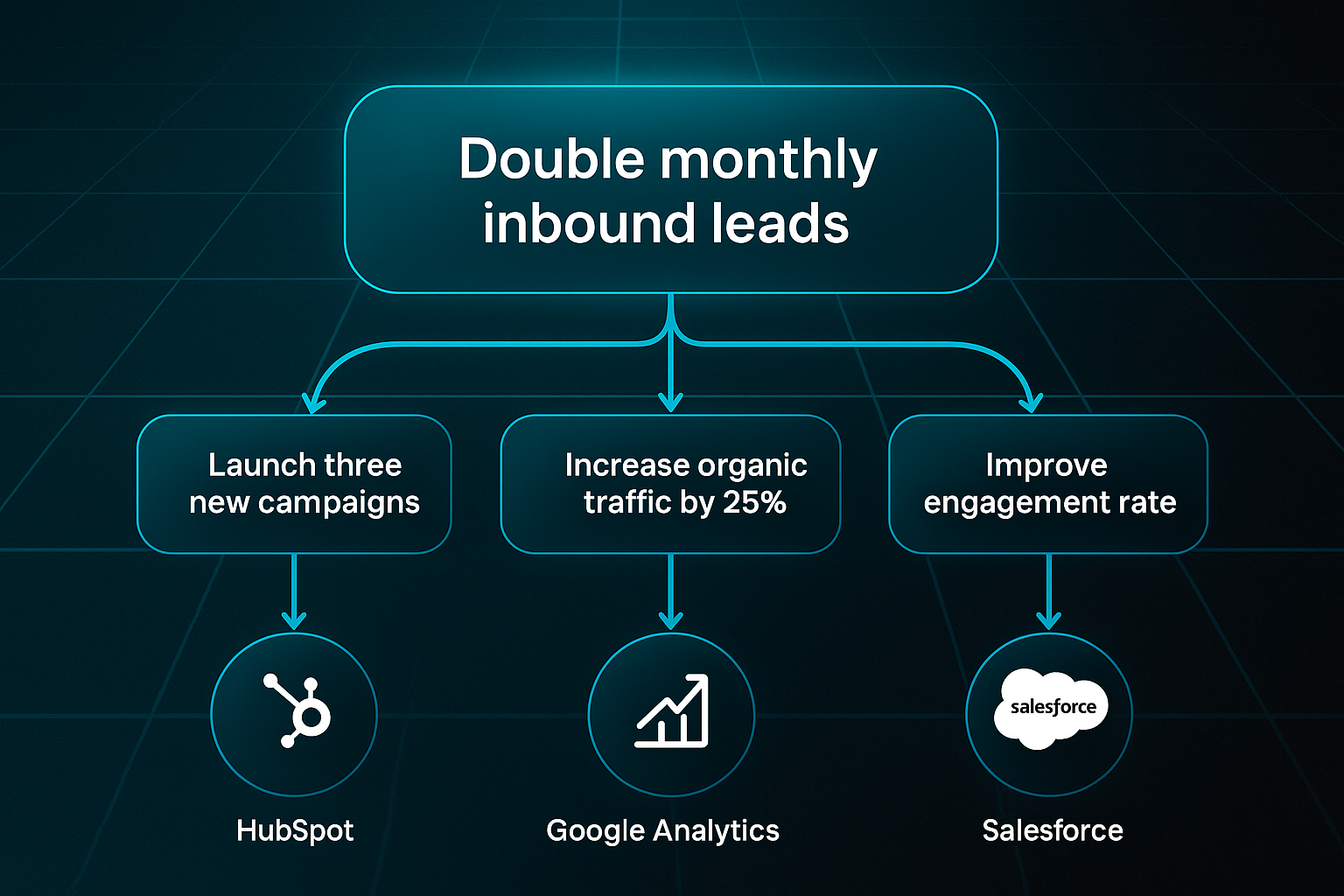
Scaling isn’t just numbers and dashboards. It’s making sure your buyer personas keep up with the pace. You’ll want a repeatable template for this—usually a 2–4 week process. Start by pulling fresh behavioural data from analytics tools like Mixpanel (£25/month). Next, break down how people engage across devices and which sources get conversions. Add what your teams and real customers report, and then bake new goals, preferred channels, and tech tools into updated persona documents. What’s essential? Access to current analytics, legacy persona files, and CRM data. Missing pieces call for tighter tracking or an upgrade to more advanced tools like Mixpanel or Amplitude.
Buyer personas help to improve the relevance of your digital marketing campaigns across organic, paid and earned media.
Now, every marketing team faces the challenge: which campaigns should you scale first? Here, an effort-impact prioritisation matrix is worth its weight. Score every potential campaign—say, automating email outreach—from 1 to 5 for effort (resource/time) and impact (ROI or reach). Automation might look like Effort: 2, Impact: 5, signalling a high-value, low-lift winner. It’s a two to three-hour job shared across teams. But, always revisit those scores after a pilot run—sometimes a “false positive” pops up.
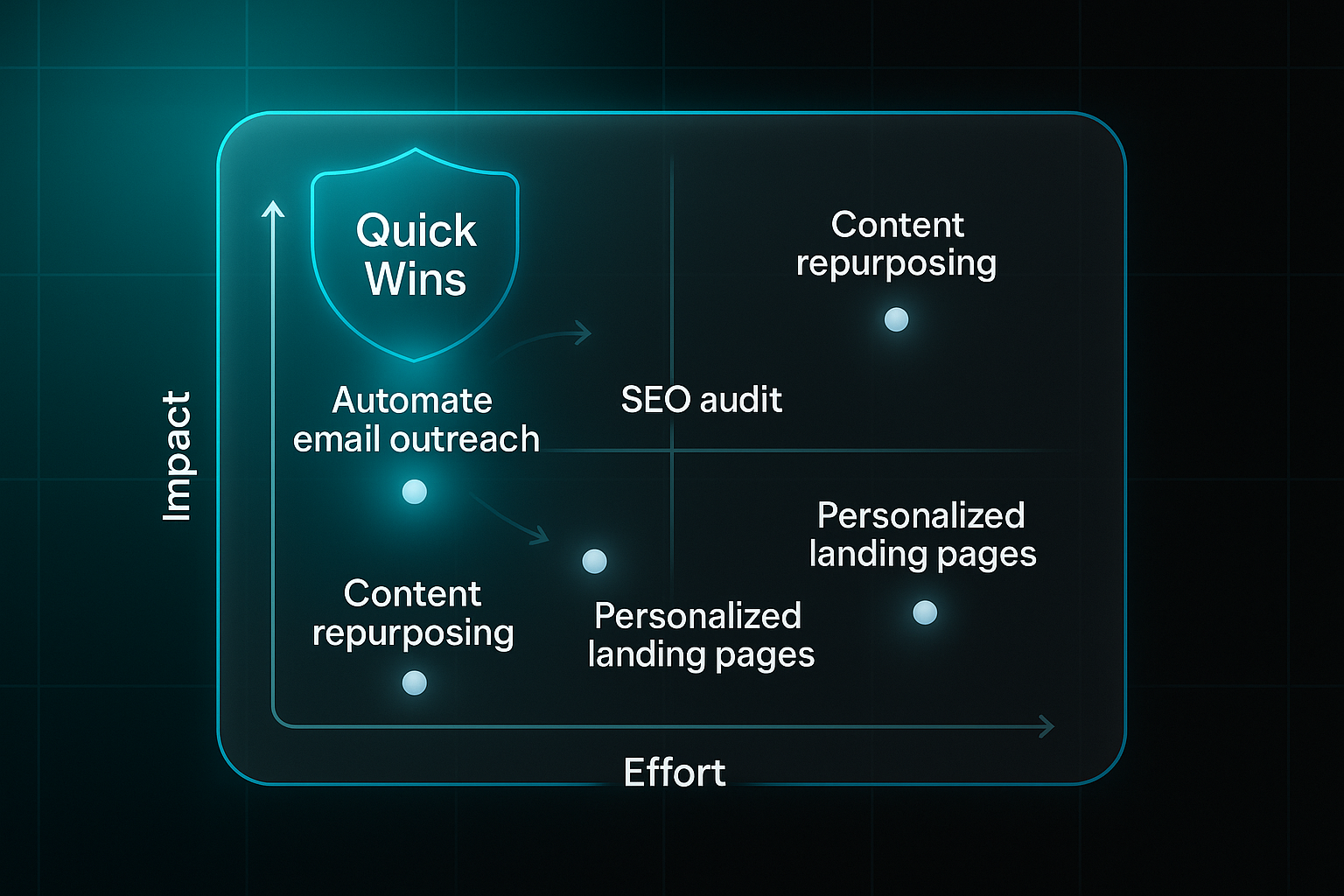
A big step on the journey is the resource and capability audit. Build a table listing out every asset and skill, who owns it, status, how much it delivers, what needs an upgrade, and the urgent priorities. Pull information from org charts, dashboards, manager feedback, and expect it to take 1–2 weeks. Results might point to hiring, extra training, or external help—partnering with platforms like HubSpot or Mailchimp, or bringing on consultants. Just make sure costs are clear and action plans are documented.
Frameworks are your anchor points for executing at scale. A common model—the hub-and-spoke structure—starts with a central resource (say, a whitepaper), which gets pushed out via multiple spokes like email, paid ads, or LinkedIn. Everything’s tracked with unified UTMs. The Salesforce AI campaign (Q4 2023) used this approach—one hub, five spokes, and saw a 45% lift in leads plus over three million impressions. Modular templates, supported by solutions like HubSpot or Mailchimp, mean rapid campaigns and baked-in quality control. Assigning team OKRs directly in dashboards drives both ownership and measurable speed.
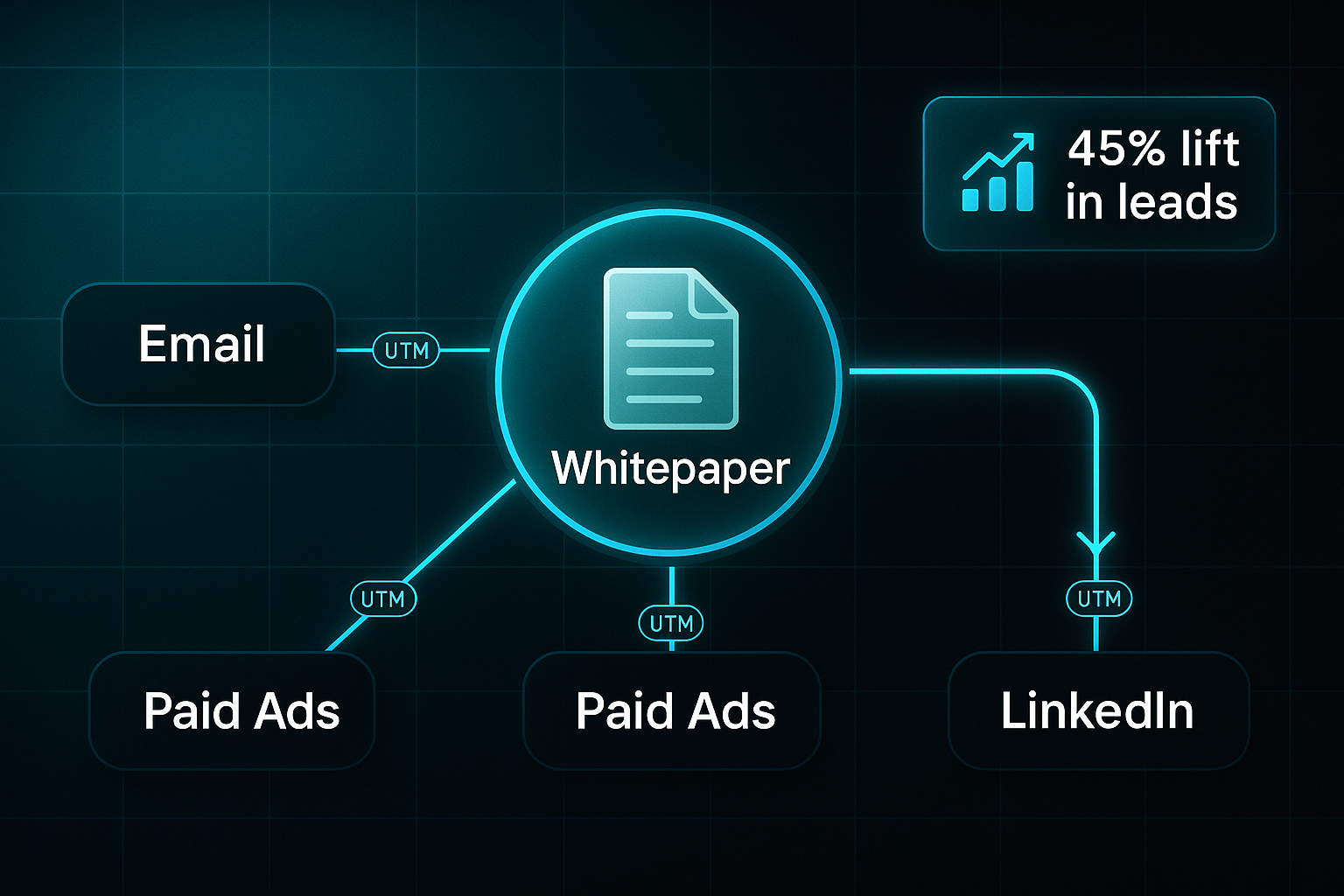
You don’t want to scale blindly. That’s where operational safeguards come in. Schedule backups for everything (Salesforce, HubSpot), use sandboxes for testing, keep versioning tight, and give each process a distinct owner. Set up robust rollback steps to undo mistakes in a flash. And before you pull the trigger on any big launch? A-B test to catch surprises before they go public. Always run through your checklist: integrated reporting, backups, persona refreshes, filled skills gaps, and trained staff—only then is your marketing machine ready to scale smoothly.
Key challenges in scaling digital marketing efforts: Managing complexity and growth pain points
Operational pain points and solution frameworks with quantitative examples
Scaling up digital marketing? It sounds exciting, but growth always comes with some serious headaches. When you jump from 2 to 8 channels, or go from 40 to 300 assets per month, you’re not just seeing a steady rise—complexity can balloon by 5–10x thanks to more layered workflows, heavier data management, and drawn-out approval cycles.
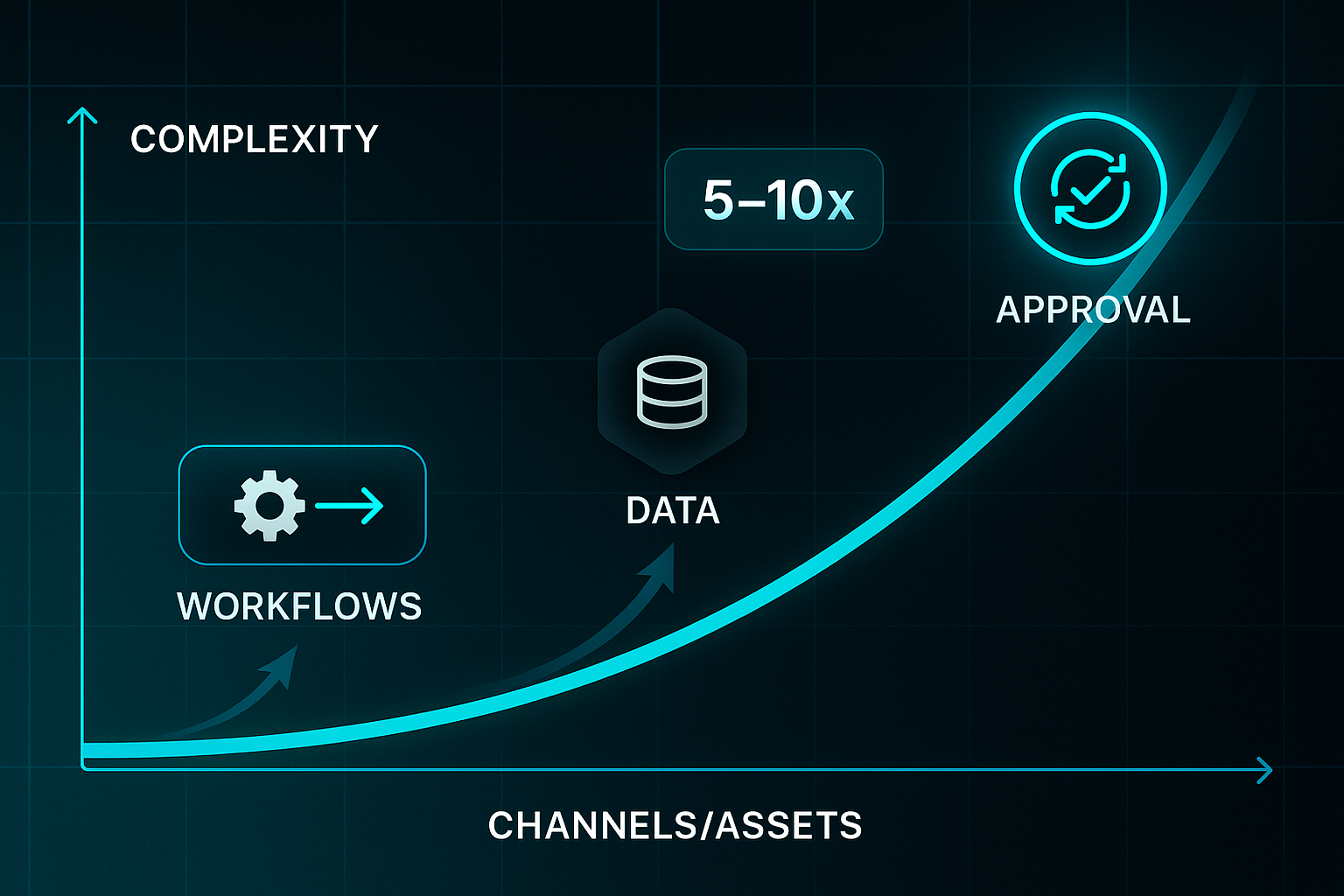
It’s a juggling act. You’ll typically find yourself wrangling a martech stack full of tools—a Content Management System (CMS), CRM (Customer Relationship Management), analytics platforms, social media schedulers, and at least one Digital Asset Management (DAM) system. To keep it all in line, businesses lean on centralised DAMs with role-based permissions, unified analytics dashboards, and onboarding processes that actually prepare teams for what’s ahead.
Here’s the thing: many run headfirst into resource bottlenecks. Doubling—or even quintupling—your output will often mean hiring 5–10 extra staff. That can add up to £300,000–£1,000,000 a year, which is hardly pocket change. The trick? Automation. It isn’t about working harder, but working smarter. Automating key workflows lets each person do the job of three, and the results speak for themselves—Cisco cut weekly asset reconciliation from 11 to 3 hours and saw a 45% jump in engagement.
RPA integration in digital marketing helps businesses enhance efficiency, minimize errors, and save time when automating their activities.
Whenever you’re plotting out scaled-up output, run simulations comparing your projected deliverables to actual team capacity. Factor in the true cost of extra hires versus automations, and remember to budget for automation software, training, IT support, and upskilling. For lighter teams, straightforward options like Buffer work well, but bigger enterprises may need heavy-hitters like HubSpot or Marketo.
Keeping your brand on point becomes much tougher. You risk creative inconsistency, message drift, and painfully slow approvals. Solutions? DAMs with template locks, automated approval flows through Wrike or Monday.com, clear ownership, and pre-publish reviews—Unilever flagged 17% of assets for review, and Siemens slashed approvals from 6 to 1.5 days.
Tracking analytics is another beast. Suddenly you might be watching more than 2,000 metrics weekly. That’s where weekly dashboards and real-time anomaly detection come in (think Improvado or Narrative BI). The payoff is less manual reporting, quicker problem-spotting, and a dashboard teams actually want to use.
And don’t forget cross-team friction. Defined Standard Operating Procedures (SOPs), central campaign calendars (using Asana or Confluence), and automated Slack or Teams updates keep everyone in sync and reduce overlap. Middleware like Zapier and quarterly SOP reviews help iron out international bumps and keep the whole system running smoothly.
How do you know you’re getting somewhere? Validate by tracking campaign output speed, approval times, off-brand rates, and efficiency gains. That means 30–50% more output per person, or 60% less manual reporting—real signs your digital marketing machine is scaling without burning out.
Automation, AI, and Managed Service Platforms: The Backbone of Scalable Digital Marketing
Mapping Automation Domains to Tools and Outcomes
Let’s talk about why automation is at the heart of scalable digital marketing. The big win? It lets your team grow output and impact without ballooning costs or headcount.
There are four critical domains here: content creation, scheduling and distribution, CRM (Customer Relationship Management) workflow management, and analytics integration.
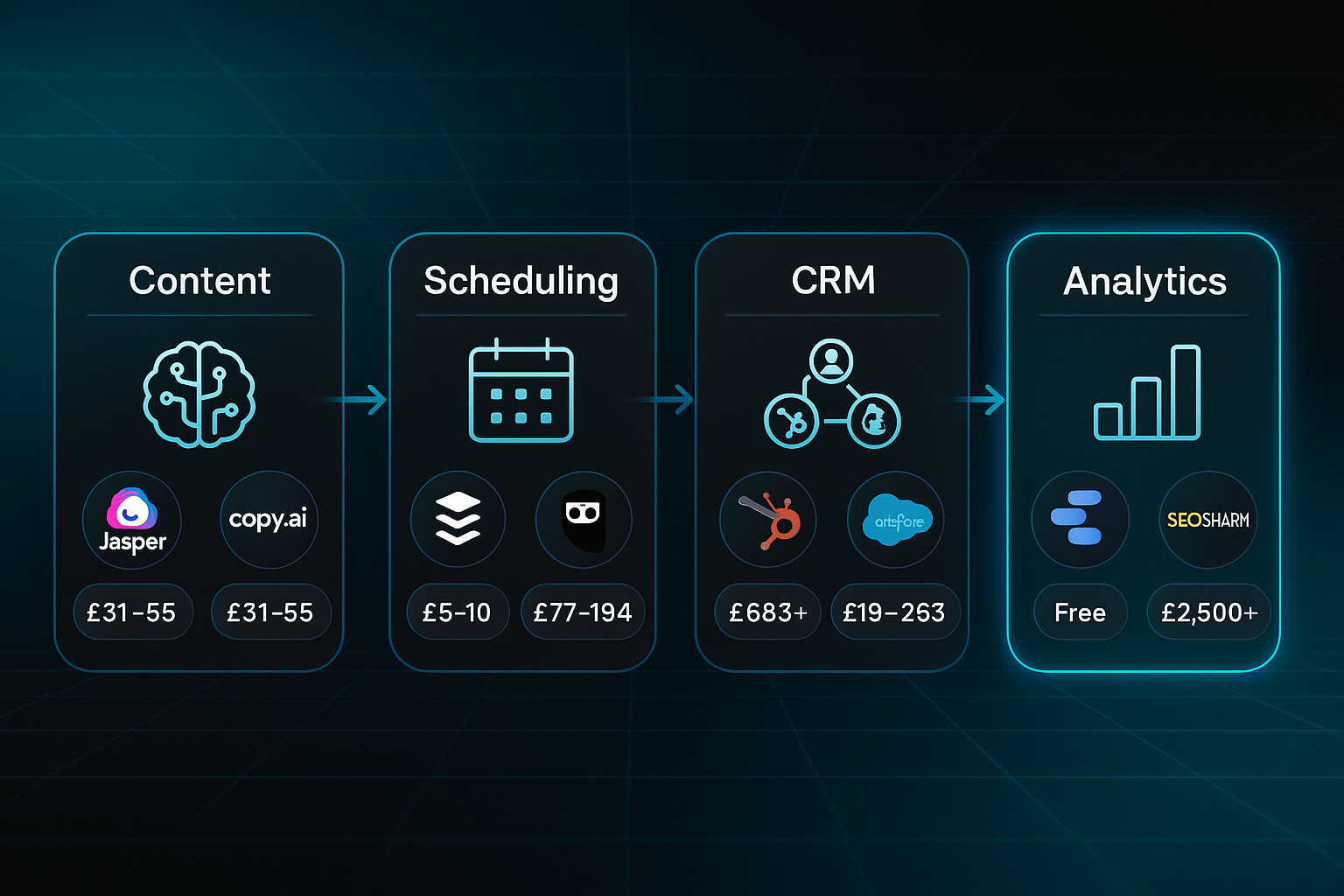
For content creation, tools like Jasper AI (£31–55/seat/month) and Copy.ai (similar pricing) let marketers draft and refine blogs or assets in minutes. When it comes to scheduling, Buffer (£5–10/user/month), Hootsuite (£77–194/month), and Sprout Social (£194–389/user/month) automate multi-channel publishing, central calendar management, and performance tracking.
CRM automation—including HubSpot (£683+/month for 2,000 contacts), Salesforce CRM (£19–263/user/month), and Mailchimp (free–£274/month depending on audience)—powers segmentation, customer journeys, and automated messaging. Analytics platforms such as Google Data Studio (free, connectors £77–232/month), Tableau (£12–58/user/month), and our managed service SEOSwarm (£2,500+/month retainer) unify cross-channel measurement and reporting, delivering actionable insights to guide your next moves.
For a handy reference, here’s how these tools compare:
| Tool/Platform | Domain | Monthly Price (low–high) | Capacity Basis |
|---|---|---|---|
| Jasper AI | Content Creation | £31–55/seat | Seat/month |
| Copy.ai | Content Creation | £31–55/seat | Seat/month |
| Buffer | Scheduling/Distribution | £5–10/user | User/month |
| Hootsuite | Scheduling/Distribution | £77–194 | User/month |
| Sprout Social | Scheduling/Distribution | £194–389/user | User/month |
| HubSpot | CRM Workflows | £683+ | 2,000 contacts |
| Salesforce CRM | CRM Workflows | £19–263/user | User/month |
| Mailchimp | CRM Workflows | Free–£274 | Audience/month |
| Google Data Studio | Analytics Integration | Free–£232 (connectors) | Connectors/month |
| Tableau | Analytics Integration | £12–58/user | User/month |
| SEOSwarm | SEO/Managed Content | £2,500+/retainer | Retainer/month |
For mid-sized teams (10–20 users), all-in automation costs are often around £1,000–£1,800/month. Managed services like SEOSwarm, with their £2,500+ retainer, provide not only SEO but hybrid workflow management and integration with your site—making things more consistent and saving your team extra effort.

AI-Powered
SEO Content Strategy
See the AI platform that's replacing entire content teams
(with better results).

Efficiency Gains and Hybrid Workflows
What changes with this setup? Campaign launches can go from days to same-day, slashing cycle times by 65–75%. Platforms like HubSpot and Hootsuite double typical output in six months, while managed solutions such as SEOSwarm have achieved documented 2–5x increases in publication velocity and a 22–35% lift in engagement.
But it’s never fully automatic—the best results always combine AI-driven speed with human oversight. AI drafts and formats; humans provide strategic guidance and final approval. SEOSwarm’s model shows how this hybrid workflow scales content while letting your team focus on strategy and quality.
Research findings reveal a critical need for marketing agencies to adopt a symbiotic operational model, integrating AI for content generation while leveraging human expertise for strategic oversight, ethical considerations, and ensuring brand authenticity.
Implementation Steps and Risk Management
Bringing in automation or managed services takes a stepwise approach for smooth adoption:
- Check Tool Compatibility
Check every tool is compatible with your CMS, CRM, and analytics stack. - Pilot Deployments
Pilot deployments to test results and gather feedback. - Asset Migration and Training
Migrate assets in stages and ensure ongoing staff training and spend reviews.
It helps to keep potential risks and their preventions top of mind:
- Key Risks
Losing brand nuance through over-automation; system mismatches and hidden costs. - Prevention
Pilot first, set up human QA gates, update SOPs frequently, and audit spend monthly.
Up next: maintaining quality, tone, and brand coherence—even as automation powers your marketing machine.
Scalable Analytics and Optimisation: Building Measurement Systems for Continuous Improvement
Mapping Out a Unified Analytics Platform Ecosystem
Scaling digital marketing calls for analytics built to grow. Start with a central warehouse—Google BigQuery or Snowflake keep all your metrics in one trusted spot.
Connect your analytics platforms: GA4 (Google Analytics 4, handy with Ads and Search Console) and Adobe Analytics for extra channel depth.
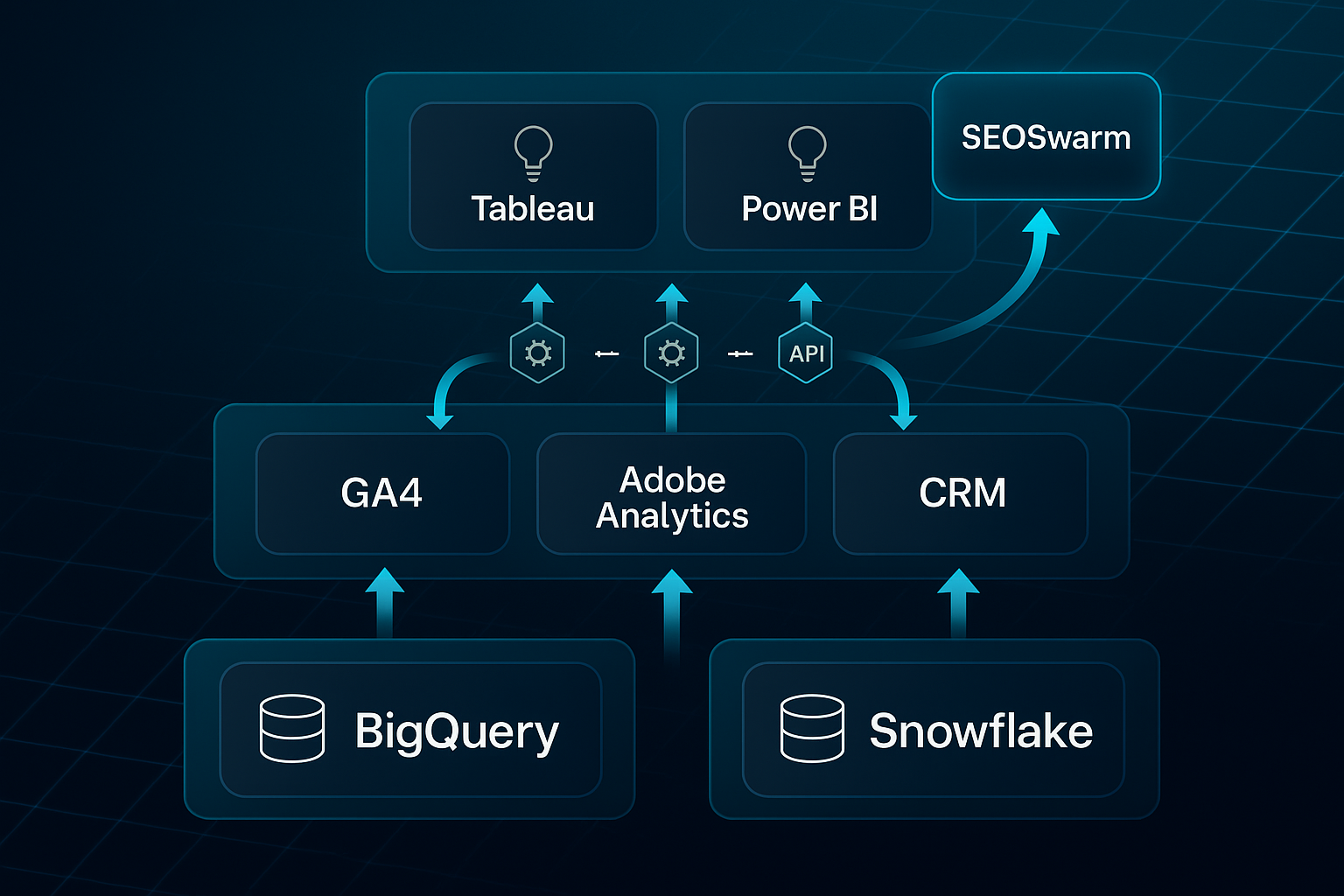
Layer in Business Intelligence tools like Tableau or Power BI. Solutions such as SEOSwarm provide SEO-specific overlays for sharper site-level insights.
API and middleware tools—Improvado, Segment, Zapier—automate feeds from channels and your CRM, delivering unified dashboards and reducing manual reporting.
Sequence matters: link platforms to middleware first, centralise the data, then validate live syncs in reporting.
Choosing and Applying Attribution Models for Scaling Campaigns
Attribution lets you see which channels actually drive results.
Multi-Touch Attribution (MTA) fits brands with 2–4 channels and under 300 monthly conversions. Data-Driven Attribution (DDA) is built for 5+ channels or over 300 conversions a month—think telecom or large-scale ecommerce.
If your business is expanding, move fast to DDA for clearer insights and more responsive campaigns.
Implementing and Maintaining Actionable KPI Dashboards
KPI dashboards turn your reporting from chaos into clarity. Assign metrics such as CAC (Customer Acquisition Cost), CLV (Customer Lifetime Value), and ROAS (Return on Ad Spend) to dedicated owners.
Set cycles—real-time updates for paid channels, daily or monthly for wider reviews. Automate alerts and focus dashboards on high-impact trends and business health.
Operationalising Automated Testing and Optimisation Routines
Never stop testing—run a live A/B or multivariate test on any site with 5,000+ monthly visits, cycling every 2–4 weeks.
Machine learning should watch for a 15% swing in conversion or spend. When alerts trigger, teams can act quickly.
Weekly automated insights are key—they bring decision times down, dropping manual report hours by up to 60%.
Reducing Analytics Overload and Preventing Data Sprawl
Expanding data brings risk of overload. ETL pipelines, template-driven UTM tags, and automated insights keep things lean and readable.
Schedule regular reviews and audit trails. Stay in control by following this health check:
- KPI Mapping Review
Confirm KPIs match real business outcomes. - Metric Pruning
Clear out metrics you don’t act on. - Dashboard Ownership Audit
Assign owners, check quarterly. - Report Cycle Consistency
Match review speed with decision needs. - Incident Response Speed
Target hours, not days. - Single Source of Truth
Keep core data in your main warehouse.
These disciplines mean approval is faster, incidents get spotted instantly, and executive decisions are always backed by unified, reliable reporting.
Governance Systems, Asset Management, and Audit Processes for Scaling
Scaling digital marketing is about maintaining consistency, compliance, and quality even as your efforts multiply. Solid governance keeps everything running smoothly.
Building a Brand Guideline Playbook
Create a live brand guideline playbook with rules for logos, colours, fonts, imagery, tone, and legal requirements for each region. Google Docs or Notion are ideal for real-time updates. Set aside 40–80 hours for initial setup, or £2,000–£6,000 if you’re hiring external specialists. Hold quarterly reviews and rely on a triage team to quickly resolve conflicts. Modular sections and change logs help your teams keep pace with changes.
Choosing the Right DAM Solution
Pick a Digital Asset Management (DAM) platform that matches your needs—Bynder (£450–£1,200/month), Airtable (£80–£320/month), or Brandfolder. Assets should be tagged for name, region, campaign, and expiry. Onboarding takes 10–30 hours, managed by one or two admin FTEs. Enable recovery protocols and notification flows in case of approval issues. Build in buffer time for large migrations.
Templates, Automation, and Permissions
Store templates by channel and region in your DAM or CMS. Initial build is 30–100 hours, with 6–12 hours a month to keep things current. Use correct permissions and emergency access forms to address access problems.
Automate multi-stage approvals with Asana or Monday.com (£8–£24/user/month). This shortens approval cycles from five days to 18–48 hours, though sensitive assets still need human review.
Centralisation and Localisation
Keep brand-critical assets central, but let regions tailor language and visuals. Assign compliance leads (£30,000–£80,000/year) and record all sign-offs in your DAM. Every six months, review governance for balance.
Auditing and Training
Run quarterly audits—12–20 hours per 100 assets—and quarterly workshops (£1,000–£5,000/quarter). If compliance drops below 90%, dashboard logs reveal training gaps or outdated guidelines. Direct audits to high-impact assets, and automate reporting where possible.
Maximising ROI and Resource Efficiency in Scaled Digital Marketing Campaigns
Always-On Optimisation: Routine Incremental Testing
Here’s where always-on testing comes in. Teams scaling digital marketing should run rolling split tests—A/B or multivariate—across multiple campaign elements to sharpen results.
Cycle these every week or month, with 2–3 team members managing set-up, QA, and analysis. Start with a clear hypothesis such as “Variant B increases conversions by 15%.” Platforms like Optimizely (with traffic split and budget capping) make these tests systematic. Now Google Optimize has retired, Optimizely and VWO step in for website testing, while Smartly.io and Hootsuite manage ad and social testing.
A typical setup runs over two weeks: configuration, QA, monitoring, and acting on alerts for significance or overspend. If results are unclear, check sample size and parameters, and keep manual overrides ready.
Dynamic Budget Shifting: Automate Spend for Better Results
Scaling means letting automation drive budget decisions. Smartly.io, Facebook Automated Rules, and Google Ads Performance Max reallocate spend by live rules—like cutting budget 25% if ROAS drops below 3.
Shopify reports saving 20+ manual hours weekly with these tools. But, always set alert thresholds and keep a 24–48-hour manual override to prevent runaway spending or channel neglect.
Automation, Outsourcing, and Keeping Key Tasks In-House
Want the right balance? Automate repetitive work (using Buffer or Hootsuite), outsource specialist production (typically £50–£120/hour), and keep strategic planning within the team.
Measuring Efficiency and Avoiding Pitfalls
Track CAC, ROI, and per-person output for scaling success. If productivity falls below sector benchmarks—like 10–20 inbound leads or 3–8 blog posts each month—schedule quick audits and tool/process reviews.
You’ll want these precautions:
- Over-automation
Regular audits, always leave manual overrides. - Misaligned KPIs
Review each funnel stage monthly. - Fragmented data
Centralise and do routine system checks. - Set-and-forget
Refresh campaign materials and platform settings regularly.
Mistake Recognition, Phased Prevention Workflows, and Troubleshooting Checklists
Over-Automation: Symptoms, Prevention, and Troubleshooting
When you lean too hard on automation, warning signs begin to appear—think declining engagement, a surge of unsubscribes, and complaints about robotic messaging. The fix? Only automate the routine, repetitive tasks and keep the strategic activities in human hands. Set up quarterly audits for your workflows, and insist on human review for every customer-facing campaign before launch.
You'll want to run periodic A/B tests, comparing automated outputs with manual ones. If engagement drops by 15% after introducing automation, pause the automated process, switch back to manual, and hunt down what's gone wrong. And don’t forget to ask for direct user feedback each month; it’s a sharp way to check if you’re still relevant.
Analytics Under-Investment: Detection and Resolution
Wondering if you’re underspending on analytics? Gaps show up as missing attribution, delayed reporting, or decisions based purely on intuition. At least 10% of your marketing budget should go straight into analytics tools and staff training.
Work with platforms like Google Analytics 4 (GA4), Tableau, or Adobe Analytics, checking each month that your KPI tracking is up to par. If you can’t pin down your campaign ROI source, hold off on further spend until tracking works. Own your analytics health with documented integrations and clear responsibility assignments.
Fragmented Tech Stack: Streamlining and Validation
Manual data entry and isolated platform silos create a headache for any busy team. So, map all tools and integrations every year, remove overlaps, and standardise wherever you can. Platforms with open APIs—think HubSpot or Salesforce—help here, plus middleware like Zapier for quick fixes.
Every quarter, validate your data flows and log any integration failures for your upgrade list. Feedback from your team about tedious manual work is gold for spotting problems.
Preventing Formula Fatigue: Creative Management
If your click-through rates falter and engagement stagnates, it’s a strong signal that your message is running on autopilot. Track how often you reuse creative assets and templates monthly, rotating formats to keep things fresh. Schedule quarterly brainstorming sessions, and if fatigue lingers, run pilots of new material and benchmark against your top competitors.
Audience surveys and engagement metrics together confirm what’s really working.
Resolving Documentation and Training Gaps
Recurring onboarding delays or repeated workflow mistakes highlight documentation gaps. Store guides in live, version-controlled spaces such as Notion or Confluence, updating at least once a quarter. Make sure every key process is documented. Refresh training twice a year and use onboarding simulations for proof. Peer reviews and extra audits after errors or rapid team growth keep things tight.
Selecting and Integrating Scalable Platforms, Tools, and Services for Digital Marketing Growth: Evaluation, Onboarding, and Hybrid Model Roadmaps
Building Your Platform/Tool Evaluation Matrix: Action Steps and Selection Criteria
Choosing the right tools comes down to building a clear evaluation matrix. This isn’t about guesswork—it’s about comparing automation scope, integration level (how many APIs and how flexible), onboarding time, pricing, scalability, and contract terms against what matters most for your plan.
So, how do these platforms stack up? SEOSwarm offers end-to-end rapid SEO scaling with instant integration and hourly onboarding. If you need multi-channel coverage, HubSpot provides over 1,000 connections and quick setup, while Salesforce Marketing Cloud focuses on global personalisation with a longer rollout.
It's smart to lay out your must-haves before diving in. For SMBs, watch for platforms lacking open APIs or requiring lengthy onboarding—they could easily slow you down.
Looking at the table, speed and minimal setup tip the scales to SEOSwarm. HubSpot fits teams wanting flexibility and swift adoption. Salesforce MC suits global businesses ready to invest in complex deployments.
Your Competitors Are Using AI. Are You?
We help companies transition into the new age of marketing.

Onboarding and Migration Blueprint: Stepwise Implementation and Safety Nets
Onboarding new platforms can feel tricky, but this sequence keeps things grounded:
- Demo/Needs Analysis
Pinpoint requirements and ensure a technical fit. - API Integration Mapping
Review endpoint compatibility. - Backup and Rollback Sequencing
Safeguard with backups and clear rollback options. - Pilot Migration
Trial 10–15% of your data for accuracy. - Training Enablement
Fill gaps with targeted sessions. - Staged Go-Live & Monitoring
Assign leads, monitor progress, check KPIs.
SME migrations tend to cost £5k–£20k and take from two to six weeks. Audits and regular checks keep errors and compliance risks in check.
Troubleshooting Common Migration Issues
Every migration has its pitfalls—here’s what to watch for:
- Data sync failure
Audit your mappings, test in sandboxes. - API errors
Update your credentials and re-test. - Stalled onboarding
Escalate with support and guide documentation. - Compliance gaps
Run full audits and match standards.
Managed, Hybrid, or In-House: Decision Framework
Weigh your operating model with these options:
- Managed/Outsourced
For fast automation and lean staffing—SEOSwarm excels. - Hybrid
Mix automation and human input. - In-House
For deepest branding and high complexity.
Team Scaling, Collaboration, and Change Management for Digital Marketing Growth
Scaling digital marketing campaigns isn’t about simply adding projects—it means building agile, adaptive teams that keep output rising while standards stay sharp. That only happens with seamless collaboration and rock-solid change management.
The real action starts with how you structure those teams. Agile pod models—small cross-functional groups of 5–9 people, including a marketing owner, data specialist, content lead, designer, and paid media expert—work closely through two-week sprints and daily standups. These feedback loops are short but impactful.
Quarterly ideation cycles foster experimentation and knowledge-sharing, so creative solutions stay front and centre. As you scale, specialist roles in AI, analytics, or compliance are added, often part-time to manage budgets wisely. Retailers embracing pods in 2024 saw campaign launch speeds jump by 23% and cross-channel ROI rise by 17%.
Ownership clarity is another big win. Strategic triads—audience, media, and creative leads as core decision-makers—help prevent bottlenecks. Role maps and task lists in platforms like Monday.com, Asana, or Slack make responsibilities and escalation routes clear.
There’s proof in the numbers: Siemens shifted 300 team members onto Monday.com and approval times dropped from five days to 18 hours—an incredible 82% reduction. Onboarding costs typically fall between $2,800–$4,200 per hire, but using fractional talent cuts onboarding spend by up to 47% and ramps campaigns 31% faster.
Managing change takes an incremental approach—trial frameworks in pilot phases, run continuous improvement cycles, and check alignment in quarterly retrospectives. Biggest headaches? Over-customisation, isolated metrics, and hidden integration costs.
Practical safeguards matter: schedule quarterly org chart audits, review tool usage, lead role-mapping sessions, and roll out changes in phases. Put these approaches together and you boost launch speed, collaboration, and campaign impact—without wasting resources or letting quality slip.
Creative and Emerging Approaches for Scalable Marketing Automation
Deploying Next-Gen Automation for Impact
Emerging automation trends are transforming digital marketing at scale. AI-Adaptive Content platforms like Persado (£3,500–£7,000/month) and Phrasee (£1,200–£5,000/month) use natural language generation to personalise messaging across email, SMS, and ads. Brands using these tools report up to 37% higher email open rates and faster campaign testing.
Customer journey orchestration solutions—including Iterable (£1,100–£2,900/month) and Segment (from £95/month)—combine fragmented data for automated, personalised multi-channel experiences. AI chatbots like Drift (£500–£3,400/month) and Intercom (£65–£999/month) are boosting lead generation by 22% in six months for some software companies.
Predictive budgeting platforms such as Alteryx (£3,800+/year) and DataRobot give marketers machine learning–powered budget forecasts, particularly useful when monthly spend tops £20,000.
No-Code, Hybrid & API-First Strategies
No-code tools like Zapier (free–£48/month) and Make (£8–£42/month) automate tasks without developers—think syncing Typeform contacts to Mailchimp with a simple trigger and action. This suits SMBs with up to 5,000 automations/month; greater scale or complexity needs developer support.
Hybrid agency-AI platforms like SEOSwarm rapidly scale SEO, balancing AI-driven drafting with expert QA—great for fast-moving teams or new market launches.
To expand channels, software must support APIs, offer sandbox testing, and provide prebuilt connectors. Onboarding a new channel typically takes 1–3 weeks, with common troubleshooting around API errors or data mismatches.
Rollout, Pilots & Safeguards
Test innovations on 10–15% of your audience and target a 10–30% efficiency gain before broad rollout. Always document processes, back up data, monitor flows, and keep rollback plans in place for every automation.
Real-World Case Studies: Scaling Creative Automation Safely
What does scaling creative automation look like when the stakes and budgets are real? Let’s break down three practical case studies showing exactly how leading teams ramp up output, protect brand quality, and keep the transformation on course.
Case Study 1: AI-Adaptive Content for Email Marketing
A retail group went all-in on Persado (£3,500–£7,000/month), with pilot campaigns running for three months on 12,000 contacts. Content leads spent two days on prompt engineering plus dashboard setup. During validation, performance was tracked closely—open rates rose by 37%, test hours dropped by half, but a sudden dip in CSAT (Customer Satisfaction) triggered a pause. They kept manual templates as backup. Only ramped AI fully once CSAT exceeded 90% for two cycles, with every creative template getting real-world user feedback.
Case Study 2: Orchestrating Multi-Channel Automation
A SaaS business rolled out Monday.com (£8–£24/user/month) for project orchestration, scheduling weekly pilots with 20% of campaigns over four weeks. Technical prerequisites included dashboard training for staff and connecting legacy data sources via APIs. KPIs focused on speed—approval times fell by 82%, error rates by 17%. Rollback procedures and audit checkpoints were active throughout, only expanding platform use once both speed and error metrics held for two rounds.
Case Study 3: Hybrid SEO Scaling Using Managed Service
Switching to SEOSwarm (£2,500+/month retainer), a mid-sized e-commerce team staged a pilot for high-value content, keeping legacy workflows live for the top 10 campaigns. Pre vs post metrics revealed 2.5x publication velocity and +22% engagement in six months. Staff feedback called for added tone training after edge-case template errors. Troubleshooting focused on resolving attribution mismatches and manual mapping exceptions before full transition.
Lessons in Mitigating Automation Risks
- Dual Systems
Maintain manual backups for critical posts. - Validation Thresholds
Pause scaling if engagement or satisfaction drops >10%. - Always Pilot
Roll out new platforms on 10–20% of traffic first. - Active Troubleshooting
Address bot triggers, data mismatches, and template issues early.
Taking these steps means your creative automation can scale with agility—without compromising brand or results.
Making Scaling Digital Marketing Efforts Sustainable
Most teams think scaling digital marketing is just about more ads or bigger budgets, but the real shift happens when strategy, automation, and analytics work together. Sustainable growth comes from building systems that multiply your output—without multiplying your headaches or costs.
If you’re ready to act, here’s my advice: start by mapping your current workflows and identifying bottlenecks. Prioritise automation for repetitive tasks, but keep creative and strategic oversight firmly in human hands. Use frameworks like OKRs and effort-impact matrices to focus on high-value campaigns, and invest in unified analytics to track what truly moves the needle.
Scaling isn’t about chasing every new tool or trend. It’s about disciplined, incremental improvements—testing, measuring, and refining as you go. The teams that win are those who treat scaling as a continuous process, not a one-off project. Sustainable growth isn’t a finish line; it’s a habit you build, one smart decision at a time.
- Wil


